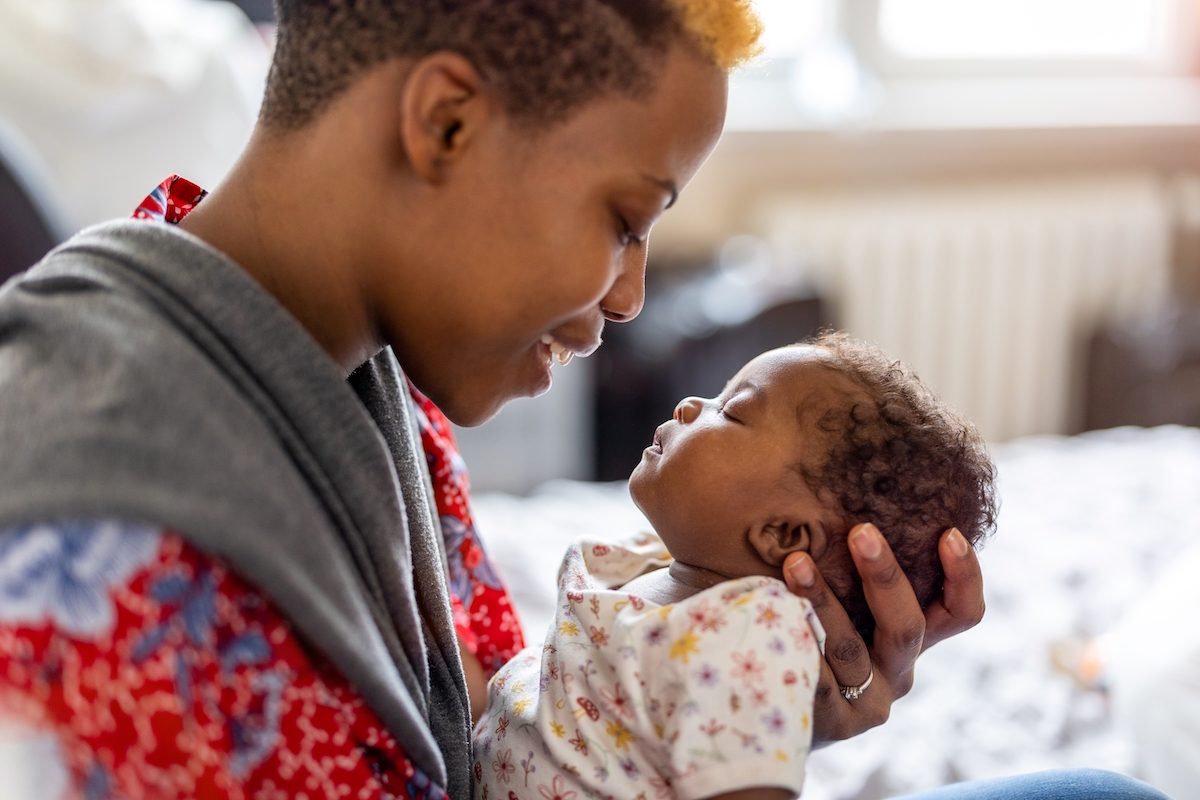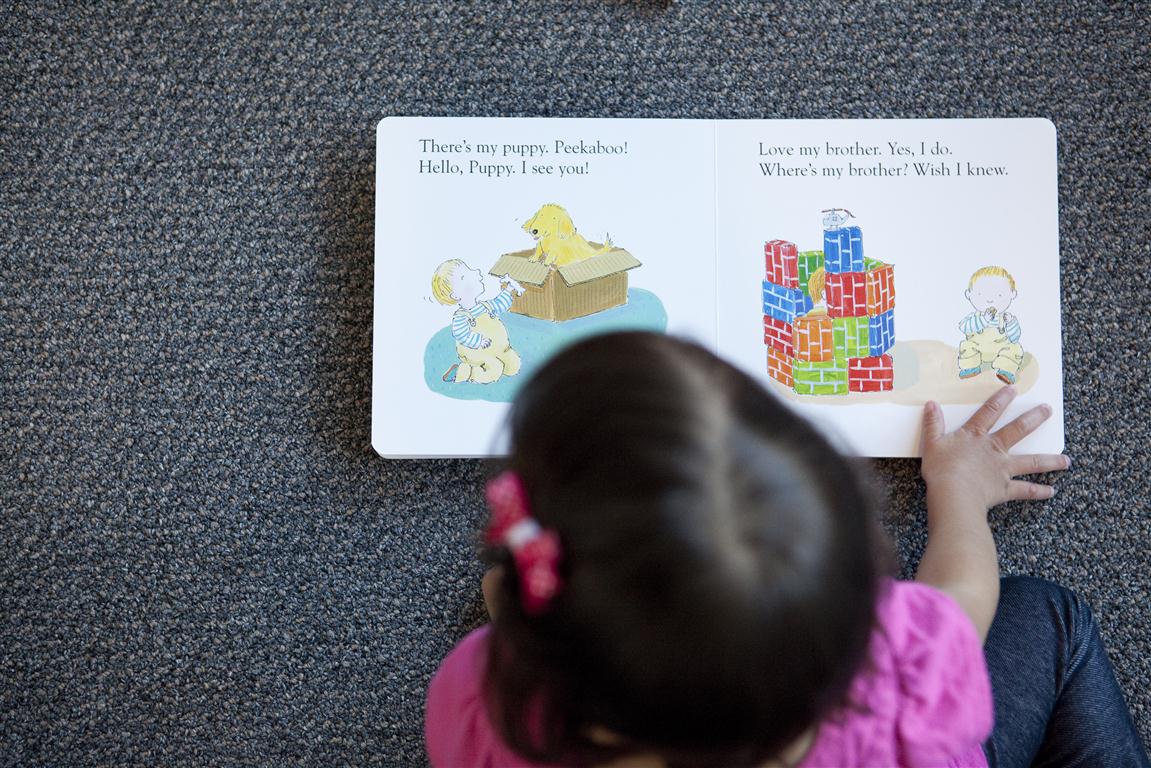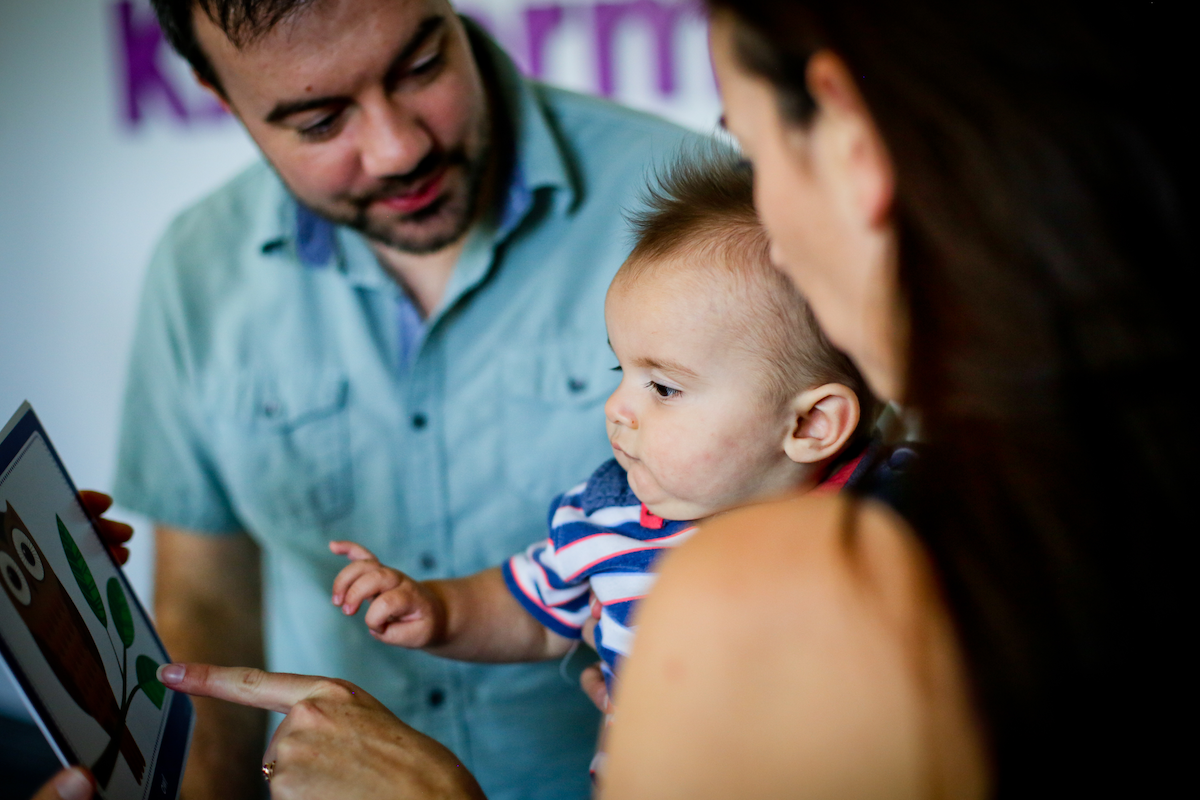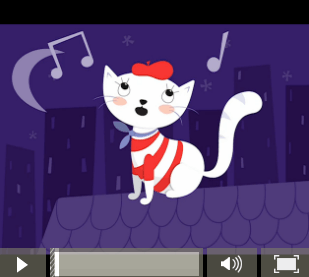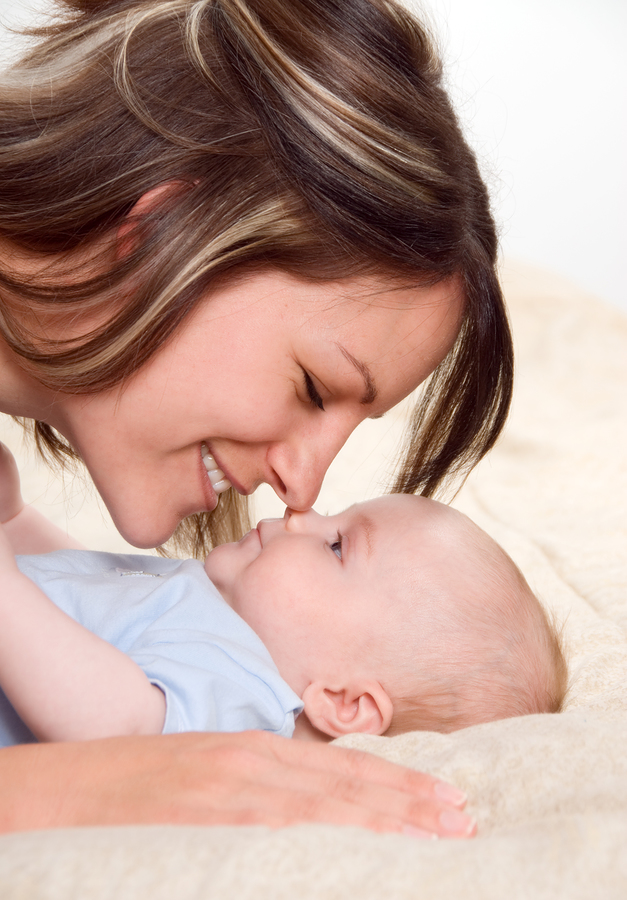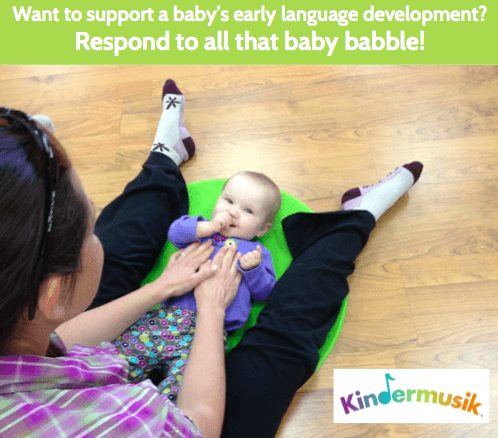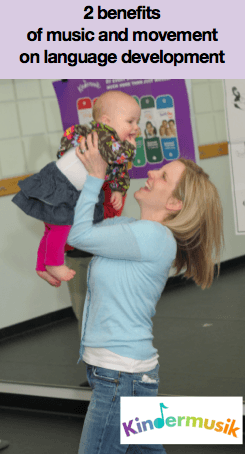Did you know that babies can’t focus on or imitate sounds in a low pitch? It’s OK to sing your favorite low-pitched song to your little one, but mixing in high-pitched kid songs in a head voice is critical to boosting young children’s natural development.
Continue reading “Why High-Pitched Kid Songs Belong on Your Playlist”3 Ways to Enhance Phonemic Awareness with Music
You’ve probably heard the word phonics, but what exactly is phonemic awareness? Phonemic awareness is the ability to identify and manipulate individual sounds—phonemes—in spoken words, a crucial pre-reading and speech skill.
Research shows that programs focused on phonemic and phonological awareness significantly increase children’s reading abilities in early years, and can be further enhanced by music. What does this look like at home? Here are a few things you can do that sound like learning, but feel like fun!
Continue reading “3 Ways to Enhance Phonemic Awareness with Music”Boost Early Literacy Development with Just 30 Minutes of Music per Week
Increased literacy development is one of the major benefits of a consistent music program. And that can happen before elementary school!
In fact, an independent research firm found that preschoolers who experienced just 30 minutes a week of Kindermusik demonstrated 32% greater gains in language and literacy skills.
Continue reading “Boost Early Literacy Development with Just 30 Minutes of Music per Week”Why Parents Repeating Themselves is Good for Babies
Every parent looks forward to hearing that first word, first sentence, first conversation…and early repetition is key.
Research gives insight into the kind of parent-baby verbal interaction that can best spur on early language development, so that by the time the baby becomes a toddler, they actually have a larger vocabulary.
Your pediatric provider probably reminds you to “talk, talk, talk” at every check-up. Yes, talking is a great way to pump up language skills, but the secret is to “repeat, repeat, repeat.” And music can help.
Continue reading “Why Parents Repeating Themselves is Good for Babies”Scooby-Dooby-Doo-Wap Your Way Through Jazz Appreciation Month
Throughout the Kindermusik experience, we deliberately introduce children to a wide variety of musical genres to give them a greater understanding of what is possible through music. This month we celebrate Jazz Appreciation Month! We wanted to make it easy for you to celebrate it, too, so the children in your life can experience the value of improvisation and emotional expression and gain an appreciation of this musical genre that traces its roots to the Southern (United States) African-American music of the early 20th century. Try this Kindermusik@Home activity to give children a taste of jazz and to support early language development.
Scat Cat Is Where It’s At
Listening to and mimicking (or echoing) language is the earliest phonological awareness skill. (Being able to hear, identify, discriminate, and mimic sounds is a precursor to matching initial and final sounds and to blending phonemes, all things that stack up to eventually enable reading.) Scat is a kind of singing found in jazz that uses nonsense syllables instead of words. Try this together:
4 Ways to Extend this Jazz Activity for Kids
- Explore the senses by talking with children about their sense of hearing. Explain that we use our ears to hear, listen, and to learn about the world. By listening closely, we know how to imitate the sounds we hear.
- Use this game as a model for teaching children how to imitate sounds and language. Find something in your home or classroom that makes an interesting sound. Have children listen to the sound. Then model for children how to mimic that sound. Practice, practice, practice!
- Play a call-and-response game at home, in the classroom, in the car, or outside: say a phrase, sentence, or simple pattern of sounds and children to repeat it back to you. For an added challenge, see if children can repeat it back with the same pace/speed, rhythm, and with the same expression as you. For instance, can they raise their voice at the end of a sentence to denote a question?
- Do you speak more than one language? Say some words, phrases, or sentences in another language (even if you only studied it in high school!) and have children repeat them back to you as accurately as possible.
Learn more about Kindermusik@Home activities.
Contributed by Lisa Camino Rowell a freelance writing in the Atlanta area.
How to Teach Babies Language Skills Before They Can Talk
 Do you ever wonder what newborns would say if they could talk? Where am I? What just happened? Who turned on the lights? Whew, that was a lot of work! I’m exhausted. Why is everyone staring at me? Do I have something on my face? Mom! Dad! It’s me! Truth is—most newborns all say the same thing: WaaaaWaaaa!
Do you ever wonder what newborns would say if they could talk? Where am I? What just happened? Who turned on the lights? Whew, that was a lot of work! I’m exhausted. Why is everyone staring at me? Do I have something on my face? Mom! Dad! It’s me! Truth is—most newborns all say the same thing: WaaaaWaaaa!
Of course, children aren’t born talking. However, even at birth, a child can usually respond to a mother’s voice, an early sign of communication, Speech and early language development involves both receptive language (what a child hears and understands) and expressive language (what a child says to others through sounds and gestures). Receptive language skills show up first as babies learn to turn towards interesting sounds or respond to tones and even their own names.
New Research: Improving Babies’ Language Skills Before They Can Talk
A new study from Rutgers University indicates that babies can be taught to better recognize sounds that “might” be language. This would increase brain development in the areas responsible for language acquisition and processing.
In the study led by Emily Benasich who directs the Infancy Studies Laboratory at Rutgers University’s Center for Molecular and Behavioral Neuroscience, the team found that when 4-month-old babies learned to pay attention to increasingly complex non-language audio patterns, their brain scans at 7 months old showed they were faster and more accurate at detecting other sounds important to language than babies who had not been exposed to the sound patterns.
“Young babies are constantly scanning the environment to identify sounds that might be language,” explained Benasich in a press release. “This is one of their key jobs – as between 4 and 7 months of age they are setting up their pre-linguistic acoustic maps….If you shape something while the baby is actually building it, it allows each infant to build the best possible auditory network for his or her particular brain. This provides a stronger foundation for any language (or languages) the infant will be learning.”
Take a look inside the Laboratory:
[youtube] https://www.youtube.com/watch?v=fJ3yZDoRwOs[/youtube]
Use Music to Support Early Language Development
In Kindermusik classes, we provide many opportunities for caregivers and babies to communicate with each other both verbally and nonverbally. For example, when we actively listen to a specific sound such as a clock sound or running water sound, integrate language and movement during a song, or use sign language, babies gain practice hearing words and making connections to their meanings—all which heightens babies’ abilities to communicate!
Find out more at Kindermusik.com.
Contributed by Lisa Camino Rowell a freelance writer living in the Atlanta area.Babies Benefit from Learning Two Languages at the Same Time
 We get fired up about the importance of early childhood education. The reason is simple. In the first seven years of a child’s life, their brains are firing up with learning—literally! Every new experience lights up the synapses in the brain and repetition makes those pathways stronger.
We get fired up about the importance of early childhood education. The reason is simple. In the first seven years of a child’s life, their brains are firing up with learning—literally! Every new experience lights up the synapses in the brain and repetition makes those pathways stronger.
At the age of two, a child’s brain includes over a 100 trillion synapses. That’s 50 percent more than we have as adults. While these new connections form rapidly and are strengthened through repetition, the brain also prunes connections not used frequently. This strengthening and deleting that happens in young children’s brains ultimately helps them process thoughts and actions more quickly.
Babies’ brains ripe for learning more than one language
All that action in the brain makes children under the age of 7 the ideal age for engaging in new experiences, including learning more than one language. In fact, new research conducted with six-month-old infants in Singapore indicates a generalized cognitive advantage that emerges early in infants raised in a bilingual home and is not specific to a particular language.
“As adults, learning a second language can be painstaking and laborious,” explained co-author and Associate Professor Leher Singh in a press release. “We sometimes project that difficulty onto our young babies, imagining a state of enormous confusion as two languages jostle for space in their little heads. However, a large number of studies have shown us that babies are uniquely well positioned to take on the challenges of bilingual acquisition and in fact, may benefit from this journey.”
The study found that:
- The infants raised in a bilingual home become bored with familiar images faster than children brought up in a monolingual home.
- Those same infants paid more attention to new images when compared to babies living in a monolingual home.
So what does that all mean? According to the press release, previous studies show that a quicker response to familiar objects and interest in new objects can predict preschool developmental outcomes, including non-verbal cognition and expressive and receptive language. Think about it. Children learning two languages at the same time are exposed to the sounds of more than one language and must learn to distinguish between the two. This makes for more—and stronger—neural connections! See why we get fired up for early childhood education?
Rocking the bilingual brain
At Kindermusik, our ELL curriculum, ABC English & Me, uses songs, story time, puppets, and Total Physical Response for English Language Learning. Research shows that music  has a positive impact on learning a second language. For example, in class ELL students may hear and repeat the rhythmic language of a nursery rhyme or song multiple times. The repetition creates stronger connections in the brain and helps children learn to speak and later read in English as their English language phonological awareness increases.
has a positive impact on learning a second language. For example, in class ELL students may hear and repeat the rhythmic language of a nursery rhyme or song multiple times. The repetition creates stronger connections in the brain and helps children learn to speak and later read in English as their English language phonological awareness increases.
Learn more about using music to learn English as a second language at www.Kindermusik.com.
Answer that Baby Babble to Speed Up Language Development
Hang around babies long enough and you start hearing things. From soft sweet coos to long monologues of “dadadadadada,” babies talk a lot—even though we have no idea what they are really saying! That’s okay. We don’t need to understand all the words (or non-words!) to join in the conversation.
How Parents Respond to All that Baby Babble Matters
 New early childhood research from the University of Iowa and Indiana University found that how parents respond to all that baby talk can speed up a baby’s vocalizing and language development. That’s great news for those of us no longer fluent in Baby talk.
New early childhood research from the University of Iowa and Indiana University found that how parents respond to all that baby talk can speed up a baby’s vocalizing and language development. That’s great news for those of us no longer fluent in Baby talk.
“It’s not that we found responsiveness matters,” explained co-author Julie Gros-Louis in a press release, “It’s how a mother responds that matters.”
In this six-month-long study, the research team watched the interactions between a dozen mothers and their 8-month-old babies two times a month for 30 minutes. During this free playtime, the researchers monitored how mothers responded to their babies’ positive vocalizations when directed toward them.
Researchers learned that how the mothers respond makes a big difference in the language development of their babies:
- Babies with mothers who responded to what they thought their babies were saying showed an increase in developmentally advanced, consonant-vowel vocalizations.
- The babbling of these babies became sophisticated enough to sound more like words.
- Over time these babies also began directing more of their babbling toward their mothers.
- Babies whose mothers did not try as much to understand them and instead directed their infants’ attention to something else did not show the same rate of growth in their language and communication skills.
Bottom line: Respond to all that baby babble!
How to Answer that Baby Babble with Music
Babies love the sound of their parents’ voices. Parents can feed that love and grow their babies’ use of language at the same time by singing, listening, moving, and dancing to music. After all, music is a language parents and babies both understand. Musical activities, such as those included in every Kindermusik class, help parents engage with their children and be responsive to them. Here are ways for parent-baby pairs and other caregivers and teachers to use music to support the early language development of babies.
1. Engage in vocal play—one of the earliest stages of language development. Vocal play is how babies’ learn to use the tongue, gums, and jaw muscles needed to produce vowels and consonants. When caregivers participate, too, they expose babies to the sounds that make up our language and encourage them to practice taking turns communicating. Vocal play works best when a parent and baby can see each other’s faces, making it easier for a child to mimic mouth movements. Plus, this eye contact also helps parents and babies bond.
Parenting Tip: Sing “Old MacDonald Had a Farm” with your little one. Pause after key parts of the song, such as “E-I-E-I-O” and wait for your baby to respond. You can also explore the different sounds the animals on the farm make like these families did in Kindermusik class:
[youtube]https://www.youtube.com/watch?v=lsLil1s_wbE[/youtube]
2. Let babies experience steady beat by bouncing to music. The brain processes music in a similar way to how it processes language. Research even shows that children who can repeat and create a steady beat show increased neural responses to speech sounds when compared to other children. Steady beat competency relates to a child’s ability to speak and read fluidly during the school year.
Parenting Tip: Put on some music and bounce to the beat with your baby on your lap or on your hip. This lets babies experience steady beat with their whole bodies. Try one of our favorite lap bounces: Pizza, Pickle, Pumpernickel.
3. Rocking the way to language development. Gently rocking babies throughout those quiet moments of each day gives parents the opportunity to combine vocal play and steady beat—and receive 2x the benefits!
Parenting tip: At the end of the day or after a feeding, hum “Hush Little Baby” (or another favorite lullaby) while you gently rock or sway your little one to the beat. As with “Old MacDonald,” pause during key phrases and wait for your baby to respond. Before too long, your baby will grow into your toddler and be able to “rock” in a new way, like this Kindermusik toddler does at home while listening to music from class!
[youtube]https://www.youtube.com/watch?v=dFP_DVDKezA[/youtube]
Throughout the Kindermusik experience, we use music to help parents engage with their children, be responsive to them, and gain developmental insights and practical tips along the way. After all, a parent is a child’s first and best teacher.
Learn more about using music to support early language development at www.kindermusik.com.
Contributed by Lisa Camino Rowell, a freelance writer living in the Atlanta area.How to Talk to Babies When They Can’t Talk Back…Or Can They?
Caring for an infant can be a bit like visiting a foreign country, especially considering the language barrier. After all, most grown-ups—from first-time parents to experienced early childhood educators—are no longer fluent in Baby. Take a look: Do you know what these babies are talking about? They certainly seem to understand each other!
[youtube]https://www.youtube.com/watch?v=_UfFY6PSVu0[/youtube]
How to talk to babies
Even though we may not know exactly what those sweet babies are saying, parents and caregivers around the world naturally speak “parentese” when talking with babies. Common features of this baby-friendly language include:
- Using a high pitch to get a baby’s attention
- Repeating words (e.g. Who is the cutest baby in the world? You are! Yes, you are!)
- Keeping sentences short
- Exaggerating syllables and words
New research from the University of Washington indicates that using parentese with babies actually encourages them to try and imitate what they hear! In the study of fifty-seven 7- and 11- or 12-month old babies each child listened to a series of native and foreign language syllables while the researchers observed their brain activity. As expected, the researchers noted brain activity in an auditory area of the brain, however, they also observed activity in the parts of the brain responsible for planning the motor movements required for producing speech.
“Most babies babble by 7 months, but don’t utter their first words until after their first birthdays,” said lead author Patricia Kuhl, in a press release. “Finding activation in motor areas of the brain when infants are simply listening is significant, because it means the baby brain is engaged in trying to talk back right from the start and suggests that 7-month-olds’ brains are already trying to figure out how to make the right movements that will produce words.”
These findings suggest that the exaggerated characteristics of parentese makes it easier for babies to model the motor movements required to speak. Bottom line: Keep talking to babies!
Babytalk Tips from Your Mother Goose
 As the mother of all nursery rhymes, Mother Goose knows a thing or two about talking to babies. With their rhymes and rhythms, nursery rhymes “wire” the brain for communication before speech even begins. It’s one of the reasons we include nursery rhymes in our early childhood curriculum.
As the mother of all nursery rhymes, Mother Goose knows a thing or two about talking to babies. With their rhymes and rhythms, nursery rhymes “wire” the brain for communication before speech even begins. It’s one of the reasons we include nursery rhymes in our early childhood curriculum.
Try these tips from Kindermusik@Home to talk to the babies in your life! Repeating these activities helps increase language acquisition and retention.
Find out more about Kindermusik at www.Kindermusik.com.
Contributed by Lisa Camino Rowell, a freelance writer living in the Atlanta area.
Music & Movement Benefits: Language Development
Lifting. Squatting. Twirling. Bending. Whew! Sometimes Kindermusik class feels more like a workout than, well, a workout. Okay, maybe not P90x, but still! While a parent works out muscles each week, young children build early language skills through music and movement activities.
2 benefits of music and movement on language development
- Pairing the word with the movement helps babies and young children understand the concept. Pre-readers rely
 almost exclusively on what they hear in order to acquire language. Children’s brains make a connection based on what they experience (being lifted high or twirling around) and hear (“up” or “twirl”). So, when a parent of caregiver lifts a child high “up, up in the sky” or “twirls around like a leaf” while singing the songs in Kindermusik class, young children learn the word and understand the concept. Later, children will discover those words correspond to marks on a page which eventually leads to letter recognition and reading.
almost exclusively on what they hear in order to acquire language. Children’s brains make a connection based on what they experience (being lifted high or twirling around) and hear (“up” or “twirl”). So, when a parent of caregiver lifts a child high “up, up in the sky” or “twirls around like a leaf” while singing the songs in Kindermusik class, young children learn the word and understand the concept. Later, children will discover those words correspond to marks on a page which eventually leads to letter recognition and reading. - Signing with hearing children boosts their communication skills. We use sign language throughout our music classes for babies. Using signs for words such as HELLO, GOODBYE, MORE, and STOP throughout class—and then later at home—supports communication and language development and even improves confidence and self-esteem. Plus, new research shows encouraging babies and toddlers to use gestures, such as sign language, helps in speech and cognitive development.
Parenting Tip: Play that fun-key music! Listen and move to music that combines key vocabulary with a movement or activity. Try favorite Kindermusik songs from class. Also use sign language for key words throughout the day. For example, sign MORE to ask if your child wants MORE fruit or HELLO when your little one wakes up from a nap.
 Come experience for yourself the benefits of music! Contact a local Kindermusik educator and visit a class.
Come experience for yourself the benefits of music! Contact a local Kindermusik educator and visit a class.
Contributed by Lisa Camino Rowell, a freelance writer living in the Atlanta area.

